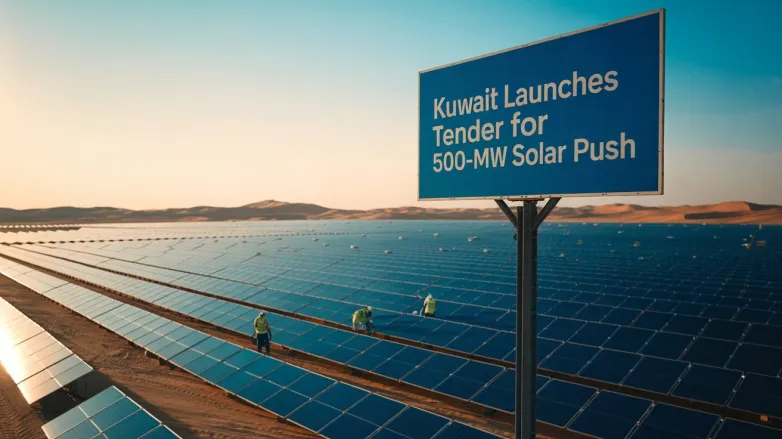Kuwait Launches Tender for 500-MW Solar Push in Al Jahra
- Kuwait invites global developers to build 500 MW of solar power in Al Jahra, advancing its 2030 renewables target and easing summer electricity shortages.

Kuwait has taken a decisive step toward diversifying its oil-heavy energy portfolio, inviting developers from around the world to compete for two large-scale solar projects that will add 500 MW of capacity to the national grid. The Kuwait Authority for Partnership Projects (KAPP) released a Request for Qualification (RfQ) over the weekend, kicking off a race to design, finance, build, own, operate, and maintain the Dabdaba Power Generation Project and the Shagaya Renewable Energy Project Phase III – Project II.
Both photovoltaic farms will rise in the sun-baked expanse of Al-Shagaya, roughly 100 kilometres west of Kuwait City in Al Jahra Governorate. Under a build–own–operate–transfer model, the successful consortium will run the plants for 30 years before handing them back to the state. Power generated by the facilities will be sold to the Ministry of Electricity, Water and Renewable Energy through a long-term purchase agreement, providing reliable revenue for investors and clean electricity for Kuwaiti homes and businesses.
The new capacity will sit within the broader Shagaya Renewable Energy Park, a showcase complex that already houses wind turbines, concentrated solar power units, battery storage, and earlier PV phases. By clustering technologies, Kuwait hopes to create operational synergies that reduce costs and extend generation into the evening peak—when air-conditioning demand soars.
Interested bidders have until 24 July to submit qualification documents. Once a shortlist is established, KAPP will issue a formal request for proposals, with financial close targeted for 2026 and commercial operation slated before the decade’s end.
The call for bids aligns with Kuwait’s goal of sourcing 15 percent of its electricity from renewables by 2030—an ambitious target for a nation that still relies on oil-fired power plants. Local press reports suggest the government is also weighing four additional solar parks totalling 2 GW to alleviate chronic summer shortfalls and free up crude for export.
Analysts say the 500-MW tender signals renewed momentum after several pandemic-era delays. If executed on schedule, the twin projects could displace more than 800,000 tonnes of CO₂ annually while sharpening Kuwait’s competitive edge in a Gulf region sprinting toward clean-energy leadership.
Also read

